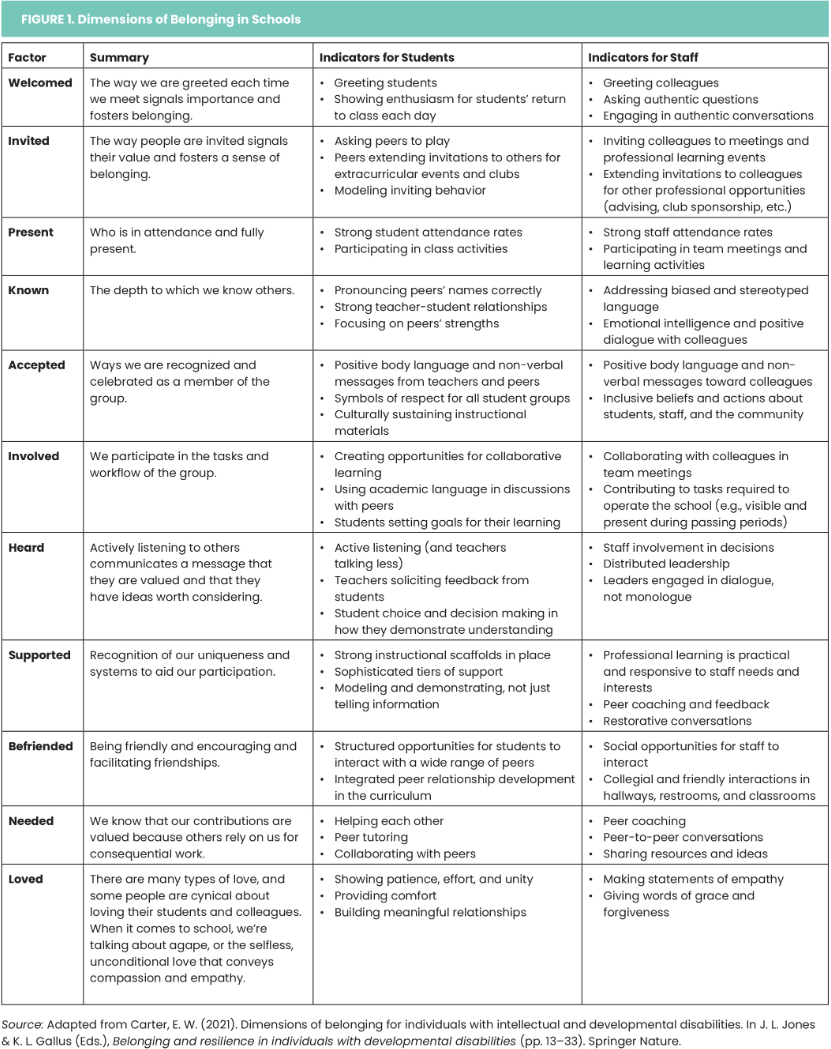OTAN News
What Does It Mean to Belong?
An exploration of student and staff perspectives on belonging.

Picture Credit: Belonging at work and school
This article written by Douglas Fisher and Nancy Frey explores perspectives about belonging. Standard thinking among adult educators is the relationship building which must occur before academics can truly begin. As we know, the adult learner votes with their feet. Attendance is one measurement of whether a student feels like they belong in your classroom. Some educators also report the difficulty of working with a leader who does not connect or offer a sense of continued belonging. Stanford researcher Geoffrey Cohen (2022) defines belonging as the following:
“Belonging is the feeling that we’re part of a larger group that values, respects, and cares for us – and to which we feel we have something to contribute.”
When we unpack the quote, it offers these insights.
- Belonging is a feeling. We know it when we do and do not experience it.
- We belong when the larger group exhibits certain behaviors toward us.
This makes us feel valued, respected and cared for by that group. - When we feel valued by the larger group, then belonging gives us the sense that our contributions are worth something.
This article provides a two-part video which explores belonging. The first part features high school students who communicate what it means and feels like to belong. The second highlights a team of 9th grade educators on how it feels to belong to their school and team.
“As you watch the video, you’ll note some common terms that both students and educators use to convey their sense of belonging. In fact, they echo a lot of the terms used by Eric Carter, a professor of special education at Vanderbilt University, to summarize evidence for creating a sense of belonging for students with intellectual and developmental disabilities. In Figure 1, we provide a list of each of the 'dimensions of belonging' that Carter (2021) identified. We include sample indicators of each dimension for students and for staff. Belonging can’t be left to chance: When we center it in our work, the social capital of the entire school -community grows.”
Figure 1
View a PDF of Figure 1

References
Boyd, D. T., Gale, A., Quinn, C. R., Mueller-Williams, A. C., Jones, K. V., Williams, E., et al. (2023). Do we belong? Examining the associations between adolescents’ perceptions of school belonging, teacher discrimination, peer prejudice and suicide. Journal of Racial and Ethnic Health Disparities.
Cai, Y., Yang, Y., Ge, Q., & Weng, H. (2022). The interplay between teacher empathy, students’ sense of school belonging, and learning achievement. European Journal of Psychology of Education.
Carter, E. W. (2021). Dimensions of belonging for individuals with intellectual and developmental disabilities. In J. L. Jones & K. L. Gallus (Eds.), Belonging and resilience in -individuals with developmental disabilities (pp. 13–33). Springer Nature.
Cohen, G. L. (2022). Belonging: The science of creating connection and bridging divides. Norton.
OTAN’s Connected News Items
Gratitude Languages: How to Support a Culture of Appreciation
Understanding Teacher Engagement in Blended Learning Environments

